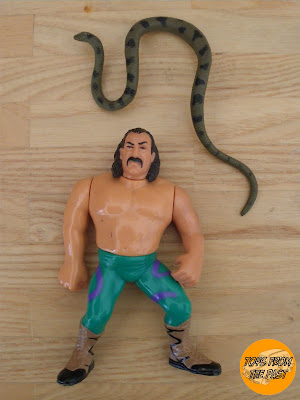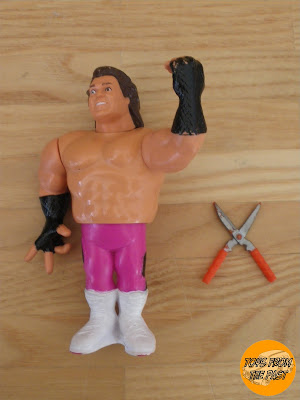
It has taken me 120 articles to publish something about Payá. I'm very sorry about this, because Payá is the pioneer company in the Spanish toy industry. The problem was that I couldn't get pictures of my Payá toys until very recently. I want to "redeem" myself, so this time I bring a very long article dealing with a very valuable toy.

The following article has been translated from the
blog of Raimundo Payá, with his permission. The
same article can be read in Spanish there, as well as many other articles dealing with toys made in Ibi.
 Notes about the history of Payá Bros. Toys:
Notes about the history of Payá Bros. Toys:
1893. The production of toys starts in a tin forge. Their first toys are miniature household and kitchenware in soldered tin, which are sold in fairs and street markets around Ibi.
At the beginning of the XXth century, soldering is replaced by staples. Their power at that time was generated using animal draught: a donkey-drawn winch.
1905. Rafael Payá Picó sells the forge to three of his sons: Pascual, Emilio y Vicente the 3rd of February.

1909. In Valencia a Regional exposition (trade fair) is hold, and Payá takes part in it with a modernist showcase containing already a wide variety of tin toys. In their application (nr. 95) they advertise themselves: “The unrivaled. Metallic toy factory. Payá system. Contruction through staples. Incredible resistance”. They are awarded with the gold medal.
1910. Payá is invited to participate in the Nacional Exposition from 1910, hold in Valencia too, and in another one that took place in Buenos Aires, Argentina, to commemorate the 100 years of independence. The success of their products already goes beyond the Spanish borders. After this great success, the first competitors appear: four of their employees establish “A.B. Verdú & Co.”, that seven years later would change its name to “Rico S.A.”.

1912. The company turns into a “Compañía Regular Colectiva” and changes its name to “Payá Hermanos” (Payá Brothers). By this time, they already have a gas motor to produce power in their factory. The company employs over 100 people, 200 in the first 20s.
1924. Payá turns into a S.A. (Sociedad Anónima, or Unlimited Co.) the 2nd of July with a starting capital of 1 million pesetas. The factory had a extension of around 16.000 m2.
1931. Payá launches the Bugatti Race Car, and the first electric railways model, superseding the existing ones (mostly clockwork or wind-ups).
1934. Raimundo Payá registers the brand Rai, with which he might name the first toy cinema with sound worldwide. The “Cine Sonoro Rai” is patented in 6 different countries: U.S.A., England, France, Germany, Switzerland and Argentina.
1936. The famous motorcycle Tuf-Tuf is produced. The Spanish Civil War began in July, and Alicante was initially on the Republican side. The 3rd November the company is given to the workers council and fusioned with Rico, forming the company “Socialized Industries Payá-Rico”
1937. On the14th September, the company is renamed Rai Coop. The number of workers is now 500, 350 of them are women.
1938. The weaponry office takes over the cooperative, and then, it became the National Factory nr. 27, commanded to the manufacture of ammunition: mostly 7 mm bullets, cannon fuses and other military munition. The factory was operating 24 hours a day, everyday of the week.
During wartime, a toy-militian was made in tin, with a rifle leaning on his shoulder and his fist raised. This toy was a variation of the policeman that was included in previous year’s catalogues. Atypical was the manufacture of legal currency in the town. Around 10.000 coins of 1 peseta and 1 real were minted.
1939. After many difficulties, and once the war was ended, the factory returns to its original owners. At this time it was very difficult to obtain raw materials, but even more difficult was to obtain power, due to the restrictions. The old gas motor had to be used again in the factory, and sometimes it produced power to illuminate the rest of the town.
The problem with the raw materials was overcome using food cans, toys had to be simplified to spare on tin. At this time appeared the first “pulga” cars (flea-cars), named like this due to its small size.
 (Around 1940)
(Around 1940)
1943. Pascual Payá Lloret is awarded with the Golden Medal of Merit in Labour/Work (Medalla de oro al Mérito del Trabajo). In September starts the “Apprentice School and Vocational Education”, whose goal was to form the employees of the mechanical Workshops in machine press and fit. This school was the source for many new bussinessmen, that later would be engaged in the toy industry in Ibi.
1944. The locomotive “Santa Fé” is made at the same time that RENFE (the Spanish Railroads company) starts using them. At this time, Payá made many trains and railroads, that also sold very well. During many years, and because of this, the image of Payá was placed with trains.
1948. The Payá factory in Alicante is inaugurated officially, after three years of construction. It was specialized in toys for girls, like the famous “Palomitón”, “Dulcecotón” and toy kitchens.
Payá acquires the first machine in Spain for plastic inyection. These were years of expansion.


(1962 and 1963)
1962. The Citroën DS is made. It is the first toy to have a
tv-commercial in Spain. And after it, many other racecars are made, like a Lotus, a 250-P-5 Ferrari, other one named “Le Mans”, the “moto-ciclón”, the C-111 Mercedes,… all of them remote controlled, with lights and practicable doors. Race tracks are also made under license of Strombecker and a very celebrated series of trucks and tractors by Barreiros.
1985. After many good, profitable years, the crisis of the mid-80s takes the company with it. Payá is forced to declare insolvency. The Payá cooperative comes up then.
The funds of the Payá toys (4400 toys), move to the “Valencian Toy Museum in Ibi”, constituting the most important and precious treasure of the entire collection.
 (All pictures for this article are also courtesy of Raimundo Payá)
(All pictures for this article are also courtesy of Raimundo Payá)

And now, the police car... I didn't wanted to interrupt the article with pictures.
The car was acquired around 1959, and still looks great. It only has some rust in several parts of its body, but it's complete and working, more than 50 years after it was bought. Let's go for several views of the car. Note that the key has to be inserted under the left rear door.


In the next picture the wind that is activated with the key can be seen through a rear window.

Another great feature is that we can turn the wheels in one direction or the other.

And here's the complete view of the lower part of the toy.

Although I didn't come to photograph the whistle, the wind-up also activates it, and it produces a siren sound, very similar to real police cars.
In this last picture the part of box which is still preserved is shown. The piece of cloth is not original, the toy came without it. At one side of the box, there is very interesting information about the toy. First is the stamp of Payá Hnos. It has the form of the above mentioned "Rai cinema with sound", and at the lower part the inscription says: "Luxury Tax - Permission Nr. 179", and it was really a luxury item to buy: It's price in 1959 it was 125 pesetas. This amount of money is 0,75 Eur today, but in 1959, it represented almost the minimum monthly revenue of a worker.

The word written over the stamp says "Sirena" (Siren) and on the right side, the number 639 has also been stamped on the box. Below this number, a round blue sticker (from which only a part remains) that surely indicates the colour of the car. This means, the car was made at least in one more, different, color.
I'm sorry that the pictures are not that good, and that I watermarked them over the toy, but I didn't want somebody to edit them (or at least so easily), and use them for their own purposes.
Hope you enojoyed this article, and that it receives many visitors. More articles about Payá are coming in the next months.
FACTS AND FIGURES:
- Name: COCHE DE POLICIA con SIRENA (CHRYSLER AIRFLOW)
- Alternate Names: POLICE CAR with SIREN
- Scale: 1:18 (approx.)
- Year: Around 1959
- Company: Payá (Spain)
- Size: Around 30 cm




































.jpg)

















